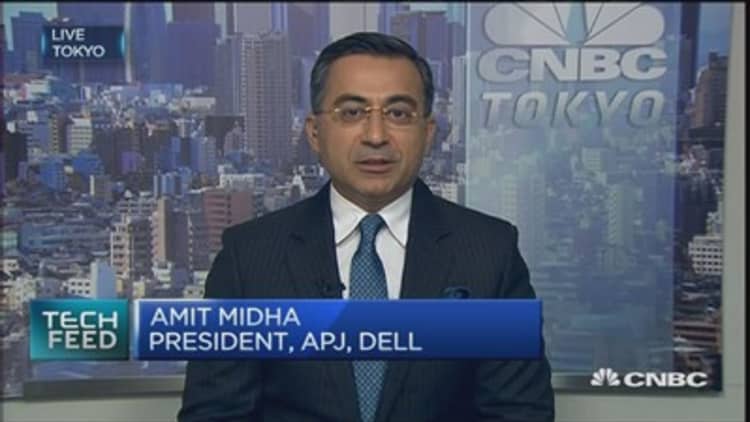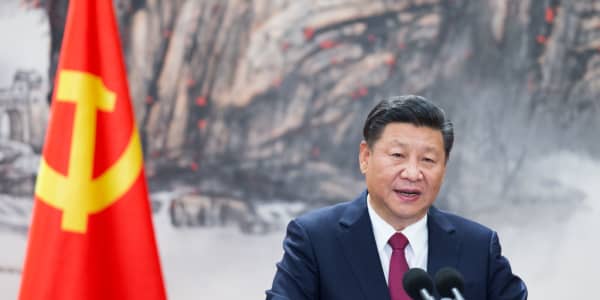On the hunt for a factory to manufacture her "smartwatch for Grandma," Jean Anne Booth headed to China recently to check out several facilities. "If you're going to build that level of technology, China is really the place to go for cost effectiveness and capability for what it is we're doing," said Booth, the CEO of four-employee UnaliWear, a two-year-old firm in Austin, Texas.
Booth, a veteran of the semiconductor industry, may soon find an even greater incentive to manufacture overseas if current economic trends continue. The recent devaluation of the yuan is expected to drive manufacturing costs lower in China, where average yearly wages in manufacturing rose from 15,757 renminbi in 2006 to 51,369 renminbi in 2015, according to Trading Economics, a global economics research firm in New York City. That is equivalent to a jump from $2,472 to $8,060.
"Chinese factories are cutting prices," said attorney Daniel Harris, a partner and founder at Harris Moure in Seattle, which advises manufacturing clients and others on doing business in China. Harris is also co-author of the popular China Law Blog. "Their costs are going down. People are upping their manufacturing in China. We see this in our practice."
In July the U.S. imported $41 billion worth of goods from China. That was up from $40.5 billion the same month last year. However, with China's manufacturers seeing new orders and exports dip in August and the steepest declines in new output since November 2011, softer demand led to "marked" falls in both costs and charges by factories, according to Markit, a provider of financial information services. The Producer Price Index, which tracks changes in manufacturing prices, fell by 5.9 percent in August from the same time in 2014, the biggest decline since the global financial crisis in 2009.
The recent devaluation of the yuan is expected to drive manufacturing costs lower in China.Trading Economics
One reason for declining manufacturing costs in China is that it is shifting more of its production to robots, counterbalancing the effects of rising wages. In a report to be released later this month, the International Federation of Robotics found that China accounted for 25 percent of industrial robot sales in the world in 2014 and had purchased about 56,000 units, with the automotive industry the leading buyer. China's share of the world's robots is up from last year's 20 percent, which made China the country with the largest percentage of the world's industrial robots.
That said, it may take a while before many U.S. manufacturers ramp up their production in China significantly. For one thing, many manufacturers in China aren't likely to dangle price breaks to U.S. firms easily, even when declining overhead justifies it, according to Gary Young, president of Avela, which has helped companies source products and services in China since 2002 and has offices in Houston and Shanghai. Often, he has found, U.S. firms find there is resistance when they try to renegotiate deals with Chinese manufacturers whose costs are declining.
Read MoreHow one US manufacturer is buffering against China
"There's always pushback," said Young. "For the most part, manufacturers' profit margins are pretty small. They are anywhere from 4 percent to 12 percent. That's all the profit margin they have. They guard that. That's their lifeblood."
He added, "Everything is a negotiation. It can take a couple of days. They try to wear you down. Their attitude is, 'You're an American. You're rich. You really shouldn't even be doing this.'"
Certainly, even with the potential for lower costs, not every manufacturer wants to make products in China. "There is supply-chain risk," said Greg Cullison, a senior executive at Big Sky Associates, an operations management advisory firm in Charlotte, North Carolina, and Washington, D.C., and an expert in geopolitical risk analysis. "China is very far away. You have to consider the shipment costs. Are you going to be subject to export tariffs or delays, which are actually costly in shipping the goods?"
Nas Siqueira, co-founder of Los Angeles-based Nawi Kids, recently opted out of a potential deal to manufacture her stuffed toys, blankets and other baby products at about one-fourth of her current manufacturing costs, though she already had a Chinese factory lined up and samples made. "I didn't want to not know how it was made and who was making it," said Siqueira.
Read More
Instead, her three-person firm, founded about two years ago, contracts out the cutting, sewing and other production work to about 26 people who work locally. "I'm really lucky being in Los Angeles now," she said. "We have manufacturing coming back. I was really lucky to have found people who could do everything, including toys, which are hard to do. I couldn't really see myself putting my stuff in someone else's hands, not having met them."

Some manufacturers have turned to China for reasons other than lower costs, such as its abundant supply of highly educated talent for research and development. Dell, for instance, recently announced it plans a $125 billion investment in China in the next five years to expand its research and development efforts. JHL Biotech has had similar motivations.
Racho Jordanov is CEO and president of JHL Biotech, the three-year-old biologic pharmaceutical company, which has raised $135 million in capital from Kleiner Perkins Caulfield and Byers and other investors and was founded by former employees of Genentech and Amgen. The 100-employee company has employees in China and Taiwan because it intends to sell the pharmaceuticals it makes in its own plants to customers in Asia.
"The very expensive biotech drugs that are discovered and made in the U.S. are simply out of reach in this part of the world but are very much needed," said Jordanov, who co-founded the firm with Genentech veteran Rose Lin.
The availability of highly educated workers graduating from local universities in China is a more powerful lure than low labor costs. Still, it isn't lost on JHL Biotech that it costs less to hire needed talent in China, which keeps overhead down.
Read MoreChina manufacturing sector is losing steam fast
"For us, it's more important to find well-educated, motivated people at the right cost—which, by the way, is probably one quarter of the U.S. cost," Jordanov said.
JHL Biotech isn't alone in finding that China is an increasingly appealing place to manufacture.
As Booth at UnaliWear sees it, obtaining an attractive manufacturing deal could mean charging customers lower prices for her watches—a definite advantage. "If it is too expensive, your adoption is going to be very poor," she said.
—By Elaine Pofeldt, special to CNBC.com





